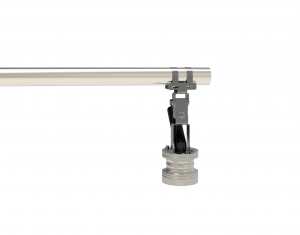In recent years, Indonesia has faced significant challenges related to water management, driven by urbanization, climate change, and extreme weather events. As a vast archipelago with diverse ecosystems and geographic conditions, maintaining effective hydrological monitoring systems is crucial for sustainable water resource management. Among various technologies available, water radar level meters have emerged as pivotal tools in municipal hydrological monitoring, providing accurate and real-time data essential for decision-making processes.
Understanding Water Radar Level Meters
Water radar level meters, also known as radar level sensors, utilize microwave radar technology to measure the distance between the sensor and the water surface. Unlike traditional methods that might rely on float mechanisms or sonic readings, radar sensors work independently of environmental factors like temperature, pressure, or vapor, delivering precise measurements even in turbulent conditions. This accuracy and resilience make radar technology an excellent choice for monitoring water levels in rivers, lakes, reservoirs, and drainage systems.
The Role of Radar Level Meters in Hydrological Monitoring
-
Real-Time Data Collection: One of the most significant features of radar level meters is their ability to provide real-time data. For municipalities in Indonesia, this means continuous monitoring of water levels can be achieved, enabling timely responses to potential flooding or water supply issues.
-
Flood Prevention and Management: Indonesia is prone to seasonal flooding, particularly during the monsoon season. Radar level meters can be installed in strategic locations across cities to monitor river levels. This data allows local governments to implement flood prevention measures and improve preparedness plans, safeguarding communities from water-related disasters.
-
Water Resource Management: Indonesia’s natural resources, including freshwater lakes and rivers, are critical for agriculture, drinking water supplies, and industrial use. Accurate water level monitoring with radar meters helps municipal authorities manage these resources effectively, ensuring sustainable usage and preventing over-extraction.
-
Infrastructure Planning and Maintenance: Urban areas in Indonesia are continually growing, placing added demands on existing water management infrastructures, such as dams and drainage systems. Radar level meters assist engineers and planners in assessing the performance and health of these infrastructures, helping to identify potential failures before they occur.
-
Environmental Monitoring: The impact of climate change on Indonesia’s hydrology cannot be overstated. By employing radar level meters, municipalities can better understand hydrological patterns, assess the impacts of deforestation or land-use changes, and develop strategies to mitigate environmental degradation.
Case Studies: Successful Implementation
Several municipalities in Indonesia have begun integrating radar level meters into their hydrological monitoring systems with notable success. For instance:
-
Jakarta: The capital city has installed multiple radar sensors along the Ciliwung River, allowing for real-time assessments of river levels and flood forecasting. This initiative has significantly enhanced the city’s flood response capabilities.
-
Bali: In tourism-heavy areas, radar level meters have been crucial for monitoring water levels in lakes and reservoirs, ensuring that both local communities and the influx of tourists have reliable access to freshwater.
-
Surabaya: This city has implemented radar technology within its drainage management systems, leading to improved flood management and lower instances of urban flooding, which is vital for maintaining public health and safety.
Challenges and Future Directions
Despite the clear benefits, the widespread adoption of radar level meters in Indonesia faces several challenges. Initial costs for installation and maintenance can be significant, particularly for smaller municipalities with limited budgets. Training and education are also necessary to ensure that municipal staff can effectively utilize and maintain these advanced technologies.
Moving forward, collaborations between government agencies, private sector companies, and international organizations can aid in overcoming these barriers. Investment in technology and infrastructure, coupled with capacity building, will enhance Indonesia’s ability to monitor and manage its hydrological resources effectively.
Conclusion
As Indonesia navigates the complexities of water resource management in the face of rapid urbanization and climate change, water radar level meters will play an increasingly vital role in municipal hydrological monitoring. By providing accurate, real-time data and improving flood management capabilities, these technologies will not only enhance the resilience of Indonesian cities but also contribute to sustainable development goals. Embracing innovative hydrological solutions like radar technology will be crucial for Indonesia as it strives for a balanced approach to water management in the coming decades.
For more Water radar sensor information,
please contact Honde Technology Co., LTD.
Email: info@hondetech.com
Company website: www.hondetechco.com
Post time: Feb-24-2025


